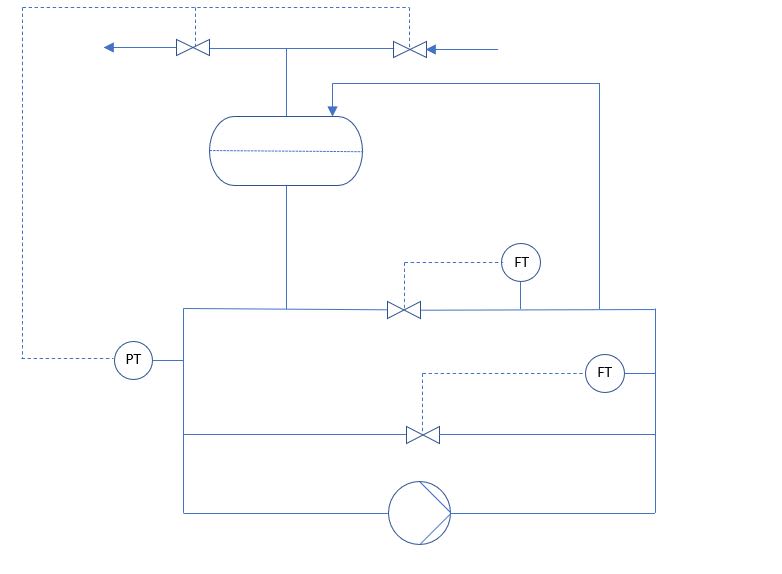EngineerRvB
Chemical
Hello all,
I'm wondering what would happen in the following situation:
A hot oil system has a centrifugal pump and is flow controlled by a spill back.
The pump suction pressure is controlled by a split range controller and a buffer vessel, supplying more N2 to the vapor head space when the pressure is too low and venting of some of the pressure in the head space when the pressure is too high.
The flow to the users is flow controlled.
There is a small circulation flow from the discharge of the pump to the buffer vessel, to keep the buffer vessel warm and to vent low boilers. This circulation flow is small compared to the pump minimum continuous flow.
What would happen if the connection between the buffer vessel and the suction line becomes blocked (completely or at least so that the flow is lower than the flow of the small circulation line)?
I can image that there will still be flow via the small circulation line to the buffer vessel, slowly filling up the buffer vessel, but what happens in the main circulating system? In my mind the removed liquid cannot be compensated by vapor (from open tank or blanketing). Will a vacuum be created in the circulating system?

Thanks and regards.
I'm wondering what would happen in the following situation:
A hot oil system has a centrifugal pump and is flow controlled by a spill back.
The pump suction pressure is controlled by a split range controller and a buffer vessel, supplying more N2 to the vapor head space when the pressure is too low and venting of some of the pressure in the head space when the pressure is too high.
The flow to the users is flow controlled.
There is a small circulation flow from the discharge of the pump to the buffer vessel, to keep the buffer vessel warm and to vent low boilers. This circulation flow is small compared to the pump minimum continuous flow.
What would happen if the connection between the buffer vessel and the suction line becomes blocked (completely or at least so that the flow is lower than the flow of the small circulation line)?
I can image that there will still be flow via the small circulation line to the buffer vessel, slowly filling up the buffer vessel, but what happens in the main circulating system? In my mind the removed liquid cannot be compensated by vapor (from open tank or blanketing). Will a vacuum be created in the circulating system?

Thanks and regards.
